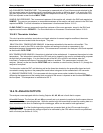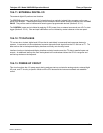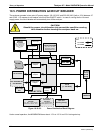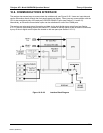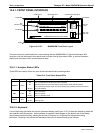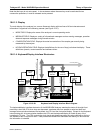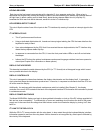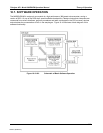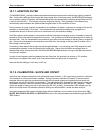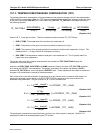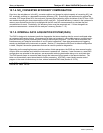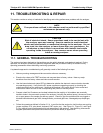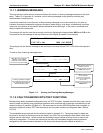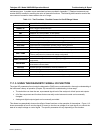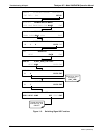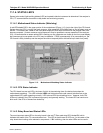
Theory of Operation Teledyne API - Model 200EH/EM Operation Manual
228
10.7.1. ADAPTIVE FILTER
The M200EH/EM NO
X
analyzer software processes sample gas concentration data through a built-in adaptive
filter. Unlike other analyzers that average the output signal over a fixed time period, the M200EH/EM averages
over a defined number of samples, with samples being about 8 seconds apart (reflecting the switching time of 4
s each for NO and NO
X
). This technique is known as boxcar filtering. During operation, the software may
automatically switch between two different filters lengths based on the conditions at hand.
During constant or nearly constant concentrations, the software, by default, computes an average of the last 42
samples, or approximately 5.6 minutes. This provides smooth and stable readings and averages out a
considerable amount of random noise for an overall less noisy concentration reading.
If the filter detects rapid changes in concentration the filter reduces the averaging to only 6 samples or about 48
seconds to allow the analyzer to respond more quickly. Two conditions must be simultaneously met to switch to
the short filter. First, the instantaneous concentration must differ from the average in the long filter by at least 50
ppb. Second, the instantaneous concentration must differ from the average in the long filter by at least 10% of
the average in the long filter.
If necessary, these boxcar filter lengths can be changed between 1 (no averaging) and 1000 samples but with
corresponding tradeoffs in rise time and signal-to-noise ratio. Signal noise increases accordingly when in
adaptive filter mode, but remains within the official M200EH/EM specifications as long as the filter size remains
at or above 3 samples.
In order to avoid frequent switching between the two filter sizes, the analyzer has a delay of 120 s before
switching out of adaptive filter mode, even if the two threshold conditions are no longer met.
Note that the filter settings in NO
X
only or NO only
10.7.2. CALIBRATION - SLOPE AND OFFSET
Aside from the hardware calibration of the preamplifier board (Section 11.6.5) upon factory checkout, calibration
of the analyzer is usually performed in software. During instrument calibration (Chapters 7) the user enters
expected values for span gas concentration through the front panel keypad and supplies the instrument with
sample gas of know NO and NO
X
concentrations. The readings are then compared to the expected values and
the software computes values for the new instrument slope and offset for both NO and NO
X
response. These
values are stored in memory for use in calculating the NO, NO
X
and NO
2
concentration of the sample gas. By
default, the iDAS stores 200 software calibration settings for documentation, review and data analysis.
Instrument slope and offset values recorded during the last calibration can be viewed on the front panel.
NO
SLOPE
, NOX SLOPE, NO OFFS and NOX OFFS are four of the test parameters accessible through the <TST
TST>
buttons.
04521C (DCN5731)



